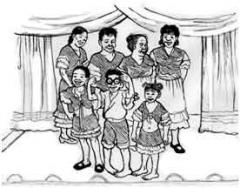Your progress
0%
complete
Cultural activities and the arts are very important ways in which the stigma of disability can be successfully challenged. Musicians, story tellers, actors, writers and artists who are disabled are powerful advocates for equality and recognition that disability is no bar to talent. Enabling persons with disabilities to participate in cultural activities increases their visibility and their engagement with life.
See how a CBR group in Colombia used art to make rehabilitation fun for children with disabilities.


FANDIC (Friends of Children with Disability for their Integration into the Community) is a foundation in Bucaramanga, Colombia that works with children with disabilities. Their mission is to integrate children with disabilities into society through CBR. One of their projects, a dance project for children with disabilities, aims to:
Twelve children aged 5-21 years with physical and intellectual impairments participate in the dance group. Their brothers and sisters are also encouraged to participate to promote family involvement and integration. Once a week, a professional dancer is contracted to teach the children, and throughout the remainder of the week, volunteers practice with them. The children are taught simple dances, which with time progress to more complicated ones. In addition to dancing, the children also perform stretching and strengthening exercises and participate in other social activities. The children are always encouraged with love, enthusiasm and positive feedback so they develop confidence in their own abilities.
FANDIC has found that dance has proved to be an excellent strategy for: